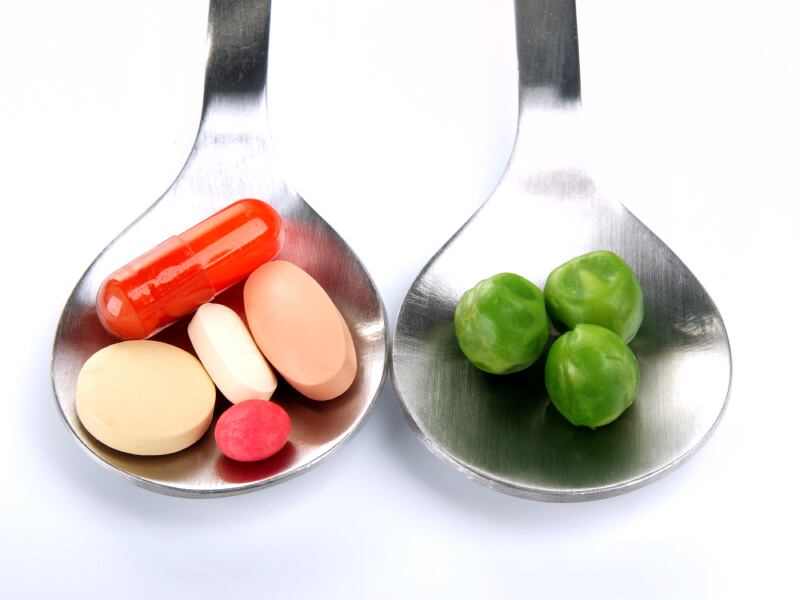The researchers found that vegetable-derived sulforaphane and quercetin were capable of stimulating the movement of Nuclear factor erythroid 2-related factor 2 (Nrf2), a protein that controls the cellular expression of a host of protective genes in the body.
“Nrf2 regulates the cellular expression of a battery of protective genes countering oxidative stress, environment toxic insults, lipid peroxidation, macromolecular damage, metabolic dysfunction and cell senescence. It senses challenge to homeostasis in the cell cytoplasm and activates a protective transcriptional response,” wrote the researchers in Antioxidants and Redox Signalling.
They wrote that such stress-responsive signalling was vital in resisting oxidative damage, cell dysfunction, cytotoxicity and mutagenesis, thereby contributing to resistance to drug toxicity, wound healing and decreasing risk of diabetes, vascular and neurodegenerative disease and ageing related disease.
The authors suggested that better manipulation of the Nrf2 system would lead to more effective use of micronutrient Nrf2 activators in functional foods and improved management and treatment of some diseases.
Nrf2: the body’s danger sensor
The researchers were the first to record the continual movement cycle of Nrf2, which sees the protein oscillate in and out of the cell nucleus once every 129 minutes to sense the cell’s health. When Nrf2 is exposed to threats to the cell’s health it oscillates faster and activates an increase in the cell’s defence mechanism, including increasing antioxidant levels and the expression of a gene called Glyoxalase1 or Glo1.
“Increased expression of Glo1 experimentally prevents insulin resistance - a metabolic state that leads to the development of type-2 diabetes. Decreased expression of Glo1 has also recently been found to be a driver for coronary heart disease,” professor Paul Thornalley of the Protein Damage and Systems Biology Research Group at the University of Warwick, told NutraIngredients.

Phytochemicals as potent activators
The researchers successfully increased Nrf2’s cycle speed to 80 minutes by introducing vegetable-source sulforaphane and quercetin. These ‘potent activators’ therefore increased expression of Glo1 without putting cells under threat.
“By increasing expression of Glo1 through activation of Nrf2 (and other protective genes), we would expect potent activators of Nrf2 which induce increase in Glo1 to be good candidate substances to include in functional foods to prevent type 2 diabetes and heart disease,” explained professor Thornalley.
The researchers chose sulforaphane and quercetin as well known Nrf2 activators of dietary origin, but professor Thornalley said that many other Nrf2 activators would likely work via a similar mechanism.
This team of researchers has been working on Nrf2 as a target for improved health and treatment of diabetes and heart disease for about 10 years. This particular project was funded by the Biotechnology and Biosciences Research Council UK (BBSRC) Diet and Health Research Industry Club (DRINC) and the EU Framework Programme-7 BIOmarkers of Robustness of Metabolic Homeostasis for Nutrigenomics-derived Health CLAIMS Made on Food (BIOCLAIMS) project.
Clinical study underway
The findings are being tested in a clinical study that will complete in 2015.
“We will know then if Nrf2 activators increasing Glo1 are effective in people,” said professor Thornalley.
He added that further research is required on the mechanism of Nrf2 oscillation – how precisely substances adjust the frequency, how this influences selection of different genes to be increased, and screening to find better health beneficial dietary compounds.
Source:
Antioxidants and Redox Signalling
Published online ahead of print September 2, 2104
‘Frequency modulated translocational oscillations of Nrf2 mediate the ARE cytoprotective
transcriptional response’
Authors: Mingzhan Xue, Hiroshi Momiji, Naila Rabbani, Guy Barker, Till Bretschneider,
Anatoly Shmygol, David A. Rand and Paul J. Thornalley
